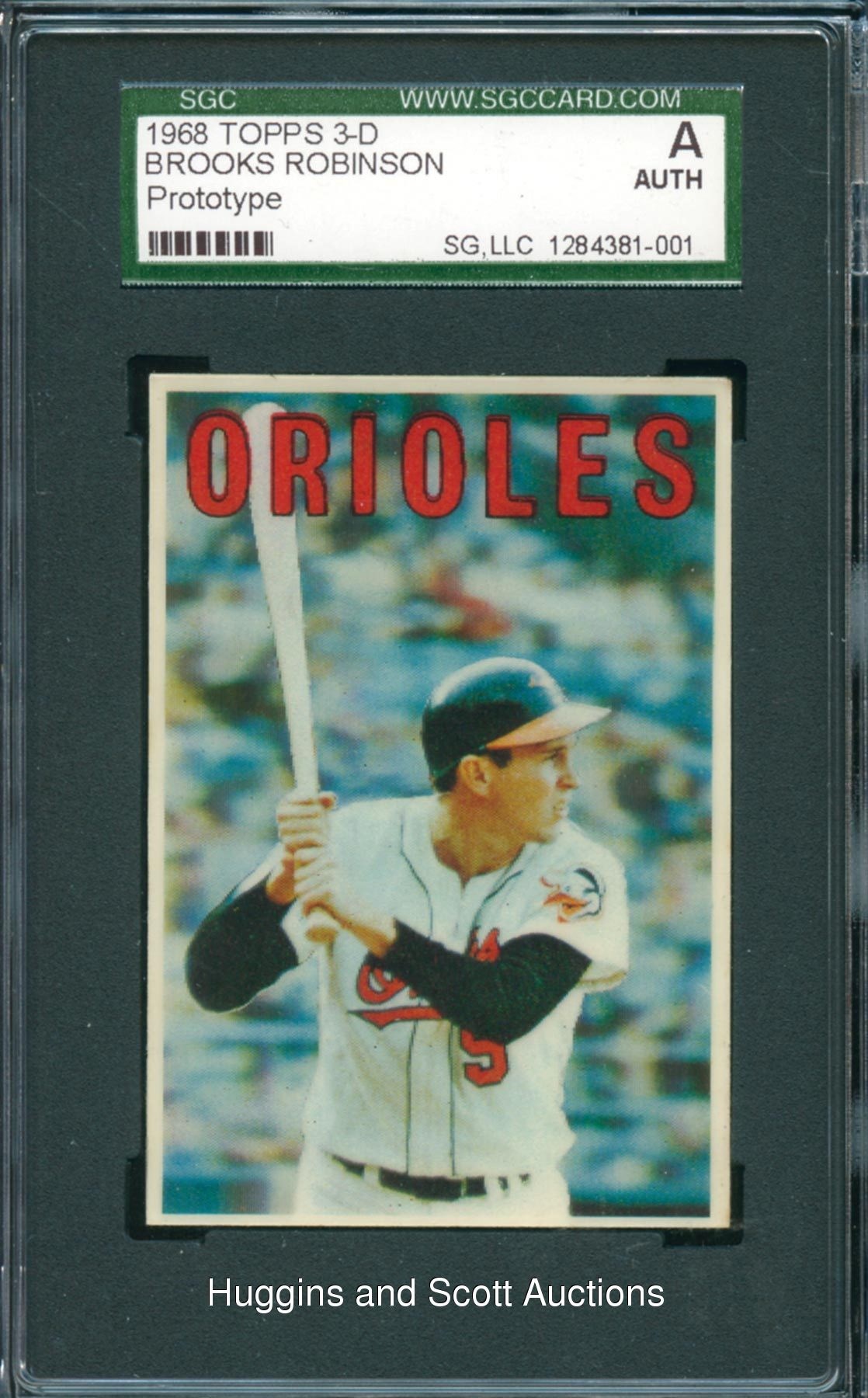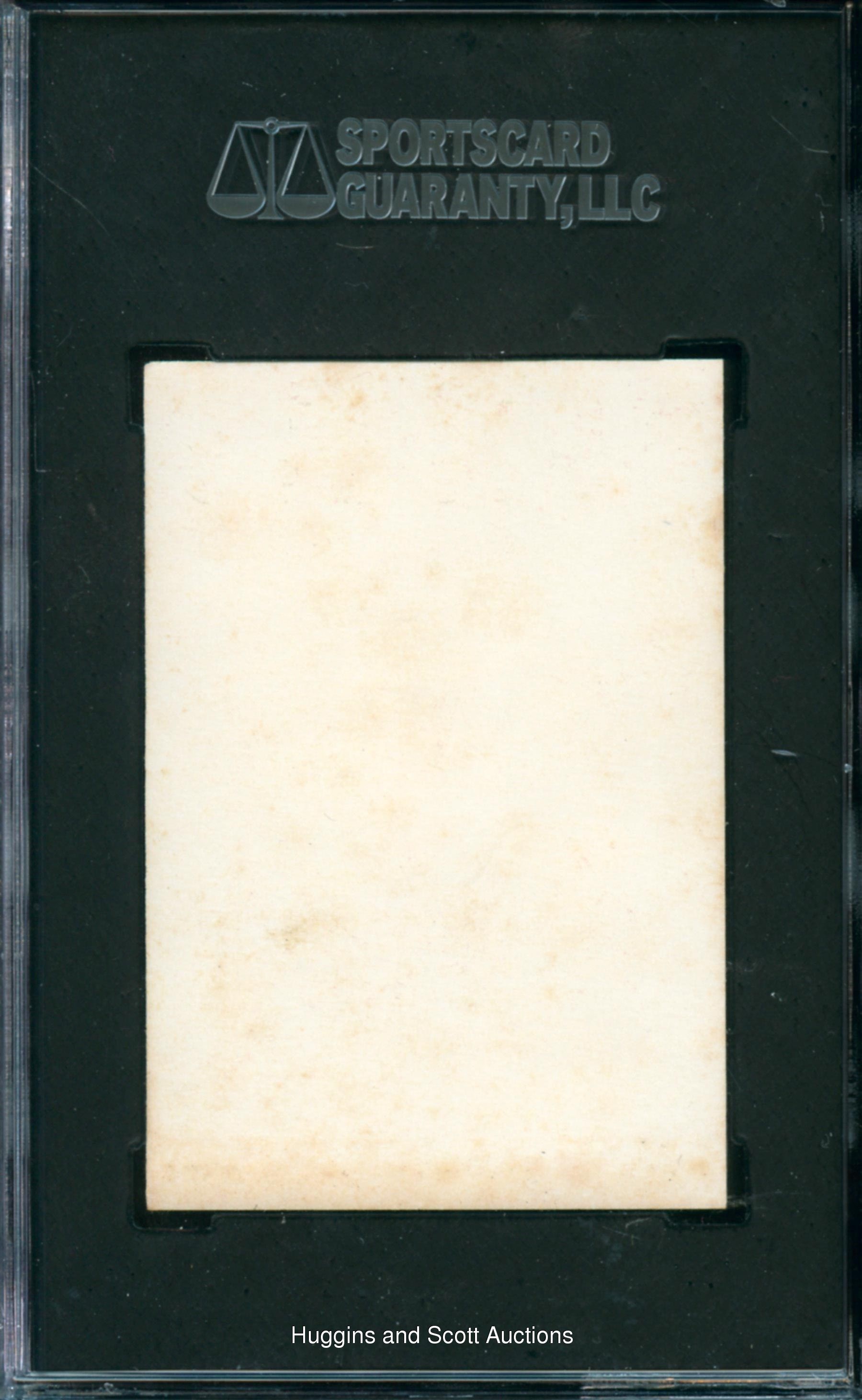Search
1968 Topps 3-D Brooks Robinson Prototype SGC Authentic—Only Graded Example in Hobby
- Sold For: $32,313
- Year: 1968
- Auction: 2011 September
- Lot #: 1
- Auction Category: Postwar Baseball - 1960s Cards
Throughout the 1960s the Topps Company released more than 25 baseball sets apart from their wax pack inserts in various regions of the United States. These limited issues were designed not only to spur sales in mainline products but also to gauge interest in nontraditional uses of cardboard images. Children’s currency, discs, games, plastic player molds, punch-outs, stamps, stickers and tattoos of different sizes and dimensions were marketed to varying degrees of success. Despite those attempts, few of these issues could be described as either innovative or groundbreaking. During the late summer of 1968, certain neighborhood stores in Brooklyn were stocked with a limited supply of packs that contained one three-dimensional baseball card and a display easel. With precise color photography and an intentionally obscured background, these quirky round corner canvases were also covered by a layer of thin plastic to create an optical illusion when moved or tilted. Several survivors from the designated Topps 3-D issue are stamped on the blank reverses with the proclamation: “This is an experimental XO-GRAPH card produced as a limited edition. Not for public circulation or distribution. Not for resale. To be returned to.” The formidable lineup contained greats such as Clemente, Perez and other stars of the day. While popular among the hobbyists of today, the cost prohibitive nature of the set in 1968 is most likely the reason that it was not renewed. Though a few hundred 1968 Topps 3-D samples are found in various collections today, two to three prototypes picturing the Oriole great Brooks Robinson are also confirmed. Graded Authentic by SGC, the offered 1968 Topps 3-D Brooks Robinson prototype is the only known graded example in the hobby and the first available for public sale. The 2-1/4 x 3-1/4 production has square corners and red block lettering reminiscent of the 1967 Topps Baseball design. The upper right corner displays mild wear, while minimal scratching is evident to the right of the slugger’s bat. Unlike the other confirmed example pictured in the Standard Catalog of Baseball Cards, this unique copy does not have any stamped statements on the moderately toned reverse.

